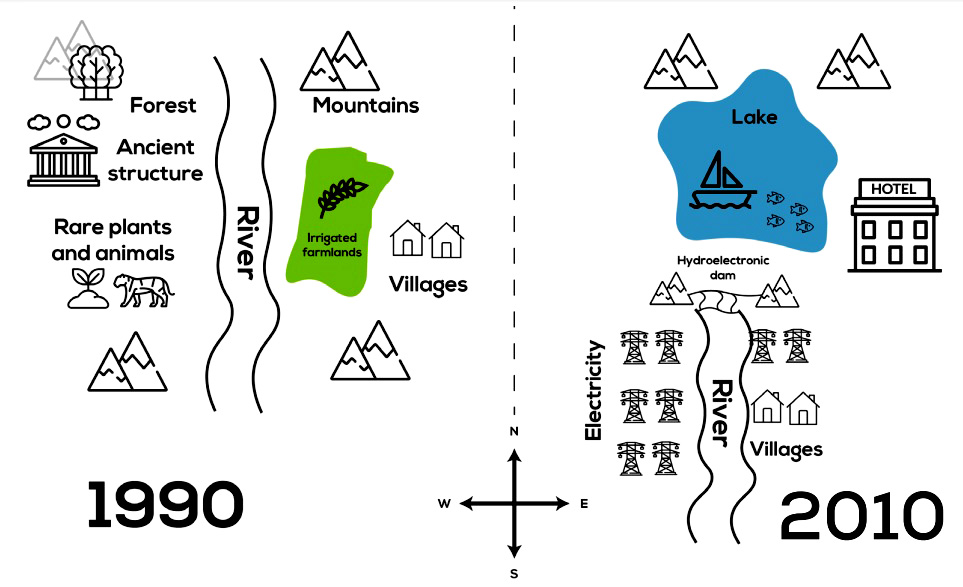The maps below show the changes in a town after the construction of a hydroelectric power dam.
Write at least 150 words.

WRITING TASK 2
You should spend about 40 minutes on this task
Write about the following topic:
In the future, it is expected that there will be a higher proportion of older people in some countries. Is this positive or negative development?
Give reasons for your answer and include any relevant examples from your own knowledge or experience.
Write at least 250 words.
WRITING TASK 1
The pictures illustrate a number of important changes which took place in a town after
the construction of a hydroelectric power dam.
From the maps, it is clear that the most noticeable change that occurred in the town was that of a huge lake. Additionally, the forest and farmlands had completely disappeared by 2010.
In 1990, there was an ancient structure and a forest with rare flora and fauna to the west of the river, and irrigated farmlands to the east. However, with the construction of a dam wall, those features disappeared beneath a large lake, which also became a fishing area in 2010.
Looking at the maps in more detail, while the mountains still existed, the villages in the far east were relocated further south of the mountains, and a large hotel was built in their place. Meanwhile, a hydroelectric power dam was constructed with a wide range of electricity pylons appearing nearby.
(154 words – Band 9.0)
WRITING TASK 2
Developments in medical technology and health care systems, among many other factors, are leading to people having longer life expectancy than before. As this trend continues, in the future, we can expect the number of old people will be much greater than that of young people. In several ways, society may benefit from a growing proportion of senior citizens. However, I believe the rest of the world population would have to shoulder much more responsibilities and the global economy would face a serious labor crisis.
On the positive side, an increase in the number of old people means a greater pool of volunteers for community and government projects. These people are usually more financially comfortable and therefore more willing to contribute free labor to ameliorating their communities. For example, we often see old people in developed countries engage in charity work to provide shelter and food for the homeless in their neighborhoods. Such an act also instils a great sense of responsibility and altruism into the young generation. This is, in fact, globally recognized to be advantageous in a world where selfishness hinders one from taking action for the sake of others.
Nevertheless, aging populations will place the whole world under many pressures. Both governments and businesses will have to pay for increased retirement pensions and health care costs, which means tax-payers will have to bear a greater financial burden and the young workforce will have to work harder and care for the elderly at the same time. Furthermore, lack of young labor workforce would cause stagnation for the growth of individual businesses and the global economy as a whole because little innovation may take place in this circumstance. As a matter of fact, many first world countries whose proportion of senior citizens is higher than that of young people, such as Japan, are already experiencing these undesirable impacts.
In conclusion, an aging population is beneficial in certain ways. However, the benefits society may reap from an aging population cannot match the damage it inflicts. It is important that the world governments should not underestimate the complexity of this problem and take immediate action to reduce its future influences.
(359 words – Band 8.5)
